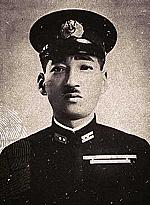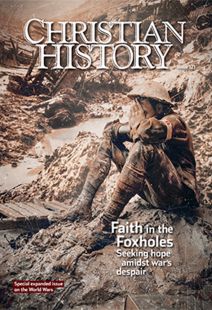Melting down the bells
KARL MARX famously defined religion as “the opiate of the people,” a kind of Prozac for the proletariat. Lenin called religious ideas “unutterable vileness … of the most dangerous kind.” The result? Overall a policy of unremitting hostility toward the Russian Orthodox Church under Lenin and Stalin, occasionally tempered for pragmatic reasons.
Just prior to World War I, the Russian Orthodox Church boasted 100,000,000 members, more than 54,000 churches, 57,000 priests and deacons, 1,500 monasteries, 95,000 monks and nuns, and extensive state and private support. It had been dominated by the tsars since 1721, when Peter the Great had replaced the patriarch (head of the church) with a synod. Shortly after the Bolshevik coup in November 1917, the patriarchate was restored, but with Lenin’s accession to power, everything changed. Through the nationalization of all land in Russia, the church lost its property and its legal status. Priests were disenfranchised, religious instruction in schools prohibited, and church marriages and divorces lost legal recognition. In 1921 group religious instruction of anyone under 18 was banned, and in 1922 all gold and silver objects and precious stones were confiscated from churches, ostensibly for famine relief.
Order Christian History #121: Faith in the Foxholes in print.
Subscribe now to get future print issues in your mailbox (donation requested but not required).
Many church leaders were charged with counter-revolutionary activities for protesting these outrages. Beginning with Tikhon, the new patriarch, thousands were imprisoned or executed. The Soviets attempted to split the church through the Living Church movement (which failed) and did not allow a new patriarch to be elected when Tikhon died in 1925.
There are still Christians here
After Stalin came to power, emphasis shifted to atheist propaganda, leading to the formation of the League of Militant Atheists. Labor unions, youth groups, schools, workplaces, and the military all promoted antireligious activities. In 1927 Metropolitan Sergius, deputy acting patriarch, accepted Soviet authority over the church and collaborated with the regime to deny any persecution, even while mass closings of churches and arrests and executions of priests and believers escalated.
The Russian Orthodox Church was left with only 4,200 churches, 8,700 priests and deacons, and 38 monasteries by June of 1941. The 1937 USSR census was suppressed, partly because it reportedly showed an unacceptably large number of Christian believers.
Nazi Germany’s invasion of the Soviet Union on June 22, 1941, marked a turning point. Sergius sent a message to his parishes reminding them of their patriotic duty: “The Church of Christ blesses all the Orthodox defending the sacred frontiers of our Motherland. The Lord will grant us victory.” The church made major contributions to Russian morale and war efforts. As a result the government curtailed antireligious policies, and the League of Militant Atheists vanished. At Easter 1942 the Moscow curfew was lifted to allow midnight services. In 1943 election of Sergius as patriarch was allowed, and the church was recognized and permitted to publish a journal, open theological institutes, and resume religious instruction of children.
The war led to revival. By 1947 there were 22,000 churches, 33,000 priests and deacons, and 80 monasteries, a far cry from 1914, but considerably more than in 1941. Churches once again could acquire religious objects, build or rent facilities, receive assistance in repairs and rebuilding, and avoid taxation on monastic lands and buildings. The honeymoon lasted through Stalin’s death in 1953.
This article is from Christian History magazine #121 Faith in the Foxholes. Read it in context here!
By Paul E. Michelson
[Christian History originally published this article in Christian History Issue #121 in 2017]
Next articles
Christ and the remaking of the Orient
The general who ordered Bibles and the mission that held on
Darren Micah LewisThe problems of peace and the problems of war
Excerpts from two war sermons
Harry Emerson Fosdick; Edward TalbotMitsuo Fuchida: from Pearl Harbor attacker to Christian evangelist
What sparked Fuchida’s interest in Christianity?
Matt ForsterSupport us
Christian History Institute (CHI) is a non-profit Pennsylvania corporation founded in 1982. Your donations support the continuation of this ministry
Donate






